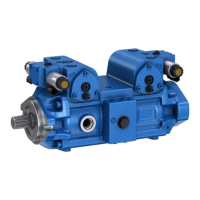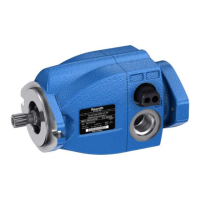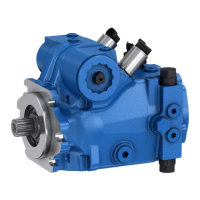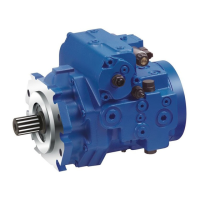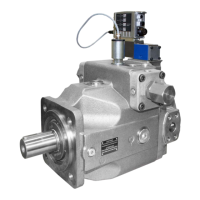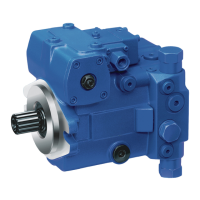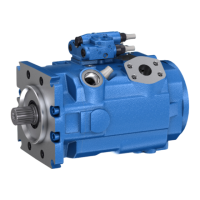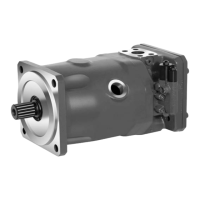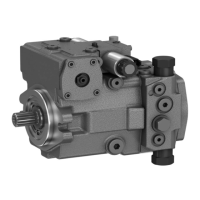50/72 Commissioning
BoschRexrothAG, axial piston variable pump A4VSO, RE 92050-01-X-B1/2019.08.23
When you test thehydraulic fluid supply, constantly monitor noise development and
check thehydraulic fluid level inthe reservoir. If the axial piston unit becomes louder
(cavitation) or the leakage fluid contains bubbles, this is an indication that the
axialpiston unit is not being sufficiently supplied with hydraulic fluid.
For information ontroubleshooting, see chapter14 "Troubleshooting" onpage66.
To test thehydraulic fluid supply:
1. Test the axial piston unit in a non-explosive atmosphere.
2. Allow the drive motor to run at the lowest rotational speed
(perdatasheet(Part II)). The axial piston unit should beoperated without load.
Pay attention toleaks and noises.
3. Check the axial piston unit’s drain line during the test. The leakage fluid should
not contain any bubbles.
4. Increase theload and check whether theworking pressure rises asexpected.
5. Perform aleak test toensure thehydraulic system issealed and can withstand
themaximum pressure.
6. Check thesuction pressure atportS oftheaxial piston pump atnominal speed
and maximum swivel angle. Refer tothe data sheet (Part II) for thepermissible
value.
7. At maximum pressure, check the case leakage pressure at portT or R(L). Refer
tothe data sheet (Part II) for thepermissible value.
8.1.5 Performing afunctional test
WARNING
Improperly connected axial piston unit!
Mixing up theports will cause malfunctions (e.g. lift instead oflower) and could
endanger personnel and equipment!
▶ Before thefunctional test, check whether thepiping specified inthe
hydrauliccircuit diagram has been installed.
Once you have tested thehydraulic fluid supply, perform afunctional test
ofthemachine/system. The functional test should beperformed according tothe
instructions ofthemachine/system manufacturer.
The axial piston unit istested for functional capability and performance before
delivery according tothe technical data. During commissioning, make sure
theaxialpiston unit was installed inthe machine/system as intended.
▶ After starting the drive motor, check the specified pressures in particular,
e.g.system pressure, boost pressure and case pressure.
▶ Prior to normal operation, measure the heat development with an approved
measuring device without load and with the customer-specific operating data.
The temperature can rise up to the maximum temperature specified on the
datasheet(Part II).
▶ Prior to normal operation, perform a leak test and heat development test without
and with load in a non-explosive atmosphere.
▶ If necessary, disconnect the pressure gauge and plug the ports with threaded
plugs.
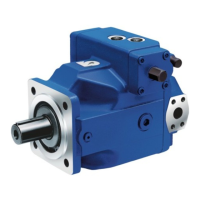
